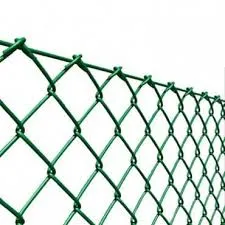Understanding Galvanized Wire Fences Benefits, Applications, and Installation
When it comes to fencing options, galvanized wire fences have emerged as a popular choice among homeowners and business owners alike. Known for their durability and corrosion resistance, these fences serve a variety of purposes while providing a cost-effective solution for securing properties. In this article, we will delve into the characteristics of galvanized wire fences, explore their benefits and applications, and provide insights on installation.
What is a Galvanized Wire Fence?
A galvanized wire fence is constructed using steel wires that have been coated with a layer of zinc to protect against rust and corrosion. The process of galvanization involves dipping the wire into molten zinc, which forms a protective layer. This treatment not only enhances the longevity of the wire but also reduces maintenance requirements. The result is a strong, resilient fence that can withstand various environmental conditions.
Benefits of Galvanized Wire Fences
1. Durability One of the most significant advantages of galvanized wire fences is their durability. The galvanized coating protects the wire from the elements, ensuring that it remains functional for years. Unlike untreated steel, which can quickly succumb to rust when exposed to moisture, galvanized wire retains its strength and integrity.
2. Low Maintenance Thanks to their corrosion-resistant properties, galvanized wire fences require minimal maintenance. Unlike wooden fences that may need regular staining or painting, galvanized wire fences can be wiped down occasionally to keep them looking their best.
3. Cost-Effectiveness The combination of longevity and low maintenance makes galvanized wire fences a cost-effective solution. While the initial investment may be higher than some other fencing materials, the overall lifespan and reduced maintenance costs make it a wise choice in the long run.
4. Versatility Galvanized wire fences can be used in various applications, from agricultural settings to residential gardens. They are commonly utilized for livestock containment, garden security, and perimeter fencing. Their adaptability to different environments makes them a versatile option.
5. Environmental Impact Galvanized wire is recyclable, making it an environmentally friendly choice. When the time comes to replace or upgrade the fence, it can be recycled rather than ending up in a landfill.
Applications of Galvanized Wire Fences
Galvanized wire fences are used in a wide range of industries and settings, including
1. Agriculture Farmers often use galvanized wire fencing to keep livestock contained and protect crops from wildlife. The strength and durability of the wire ensure that it can withstand the pressures exerted by animals without bowing or breaking.
galvanized wire fence

2. Residential Properties Homeowners appreciate galvanized wire fences for their ability to create secure boundaries around yards and gardens. They are particularly useful for keeping pets safe while allowing visibility and airflow.
3. Commercial Use Businesses often utilize galvanized wire fences for security purposes. They provide a clear boundary for commercial properties and can be paired with additional security features like barbed wire or security cameras for enhanced protection.
4. Sports Facilities Many sports fields and complexes use galvanized wire fences to enclose the area and keep fans or spectators within a designated space.
Installation of Galvanized Wire Fences
Installing a galvanized wire fence requires careful planning and execution. Here are the basic steps involved in the installation process
1. Planning Begin by determining the layout and purpose of the fence. Mark the boundary where the fence will be installed and check local regulations to ensure compliance.
2. Materials Gather the necessary materials, including galvanized wire, fence posts (wood or metal), tension wires, and appropriate fasteners.
3. Posts Installation Set the posts in concrete, ensuring they are positioned at regular intervals (typically 8-12 feet apart) for stability. The height of the posts will depend on the intended purpose of the fence.
4. Stretching the Wire Begin tying one end of the galvanized wire to a post and then stretch it taut to the next post. Use tensioners to maintain the tension and repeat the process for the entire fence line.
5. Finishing Touches Once the wire is secured, trim any excess wire and add any additional features, such as gates or barbed wire if desired.
Conclusion
In summary, galvanized wire fences offer a durable, low-maintenance, and cost-effective solution for a variety of applications. Their versatility allows them to serve needs in agricultural, residential, and commercial settings alike. With proper installation and care, galvanized wire fences can provide reliable security and protection for many years, making them a wise investment for anyone looking to secure their property.
















